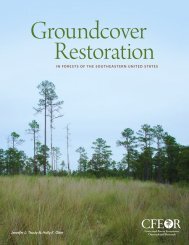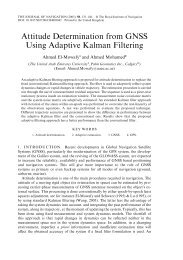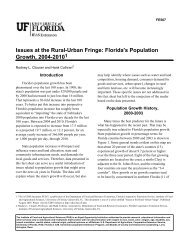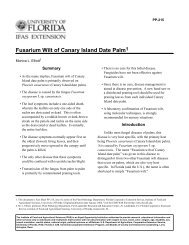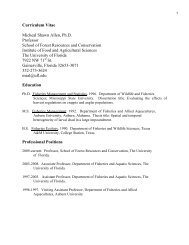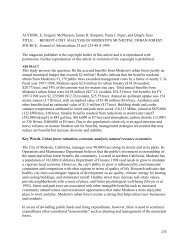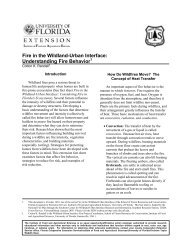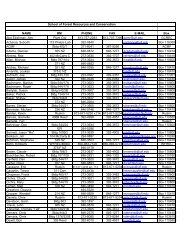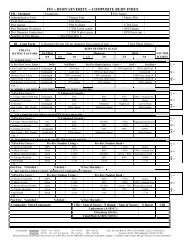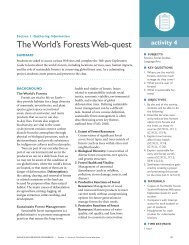Chapter 4: Plant Succession and Disturbances in the Urban Forest ...
Chapter 4: Plant Succession and Disturbances in the Urban Forest ...
Chapter 4: Plant Succession and Disturbances in the Urban Forest ...
You also want an ePaper? Increase the reach of your titles
YUMPU automatically turns print PDFs into web optimized ePapers that Google loves.
<strong>Chapter</strong> 4: <strong>Plant</strong> <strong>Succession</strong> <strong>and</strong> <strong>Disturbances</strong> <strong>in</strong> <strong>the</strong> <strong>Urban</strong> <strong>Forest</strong> Ecosystem 10<br />
Figure 11.2 Photo by Lyn Top<strong>in</strong>ka<br />
Figure 11.4 Photo courtesy National Park Service<br />
Figure 11. The eruption of Mt. Sa<strong>in</strong>t Helens is an example<br />
of primary succession. It elim<strong>in</strong>ated most traces of life <strong>in</strong> a<br />
substantial area of <strong>the</strong> nor<strong>the</strong>astern part of <strong>the</strong> mounta<strong>in</strong><br />
(11.1). Less than a decade later, pioneer <strong>and</strong> early<br />
successional plants have colonized <strong>the</strong> area (11.2).<br />
Eventually, Douglas-fir forests will become established<br />
(11.3) <strong>and</strong>, without fur<strong>the</strong>r disturbance, over several<br />
hundred years a Western hemlock forest may eventually<br />
occupy <strong>the</strong> area (11.4).<br />
where, after <strong>the</strong> disturbance, <strong>the</strong> substrate (i.e., soil)<br />
rema<strong>in</strong>s relatively <strong>in</strong>tact.<br />
Figure 11.3 Photo courtesy of R. Emetaz, U.S.<br />
Department of Agriculture<br />
primary succession can be hastened through <strong>the</strong><br />
addition of top soil.<br />
Secondary succession<br />
Secondary succession occurs <strong>in</strong> an environment<br />
that has supported mature vegetation <strong>in</strong> <strong>the</strong> past, <strong>and</strong><br />
Secondary succession also occurs <strong>in</strong> urban areas.<br />
Suppose you decide to give up <strong>the</strong> fight with weeds<br />
<strong>in</strong> your backyard <strong>and</strong> no longer mow your lawn. The<br />
changes that take place will be typical of "old-field"<br />
secondary succession. First, your backyard would be<br />
colonized by a variety of plants, mostly annuals.<br />
With<strong>in</strong> a few years, <strong>the</strong>se plants would be jo<strong>in</strong>ed by<br />
perennials <strong>and</strong> smaller shrubs <strong>and</strong> <strong>the</strong> grass would<br />
start to disappear. Later, a mix of taller shrubs <strong>and</strong><br />
tree species would seed <strong>in</strong>. Then, maybe 50 years<br />
from now, you would have a successional forest <strong>in</strong><br />
your backyard.<br />
Additional examples of secondary succession<br />
<strong>in</strong>clude <strong>the</strong> changes <strong>in</strong> vegetation <strong>and</strong> ecosystem



